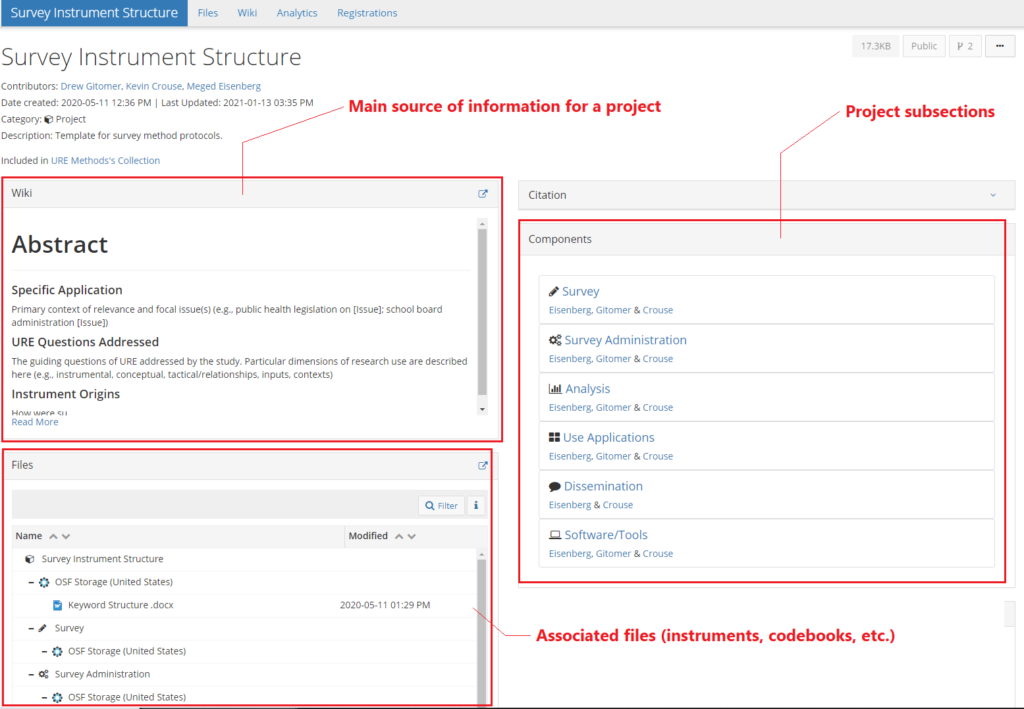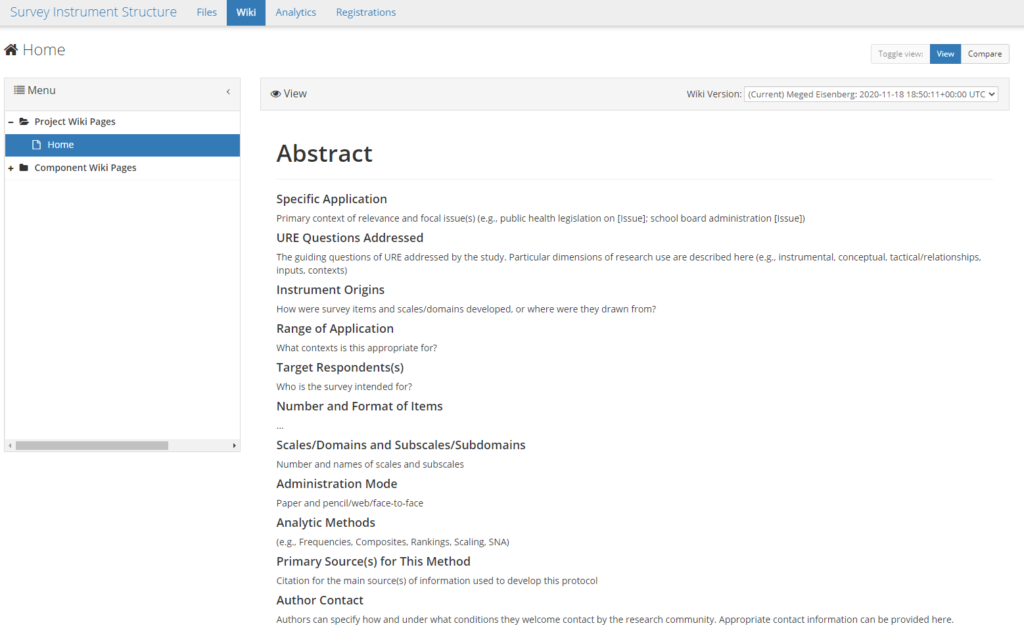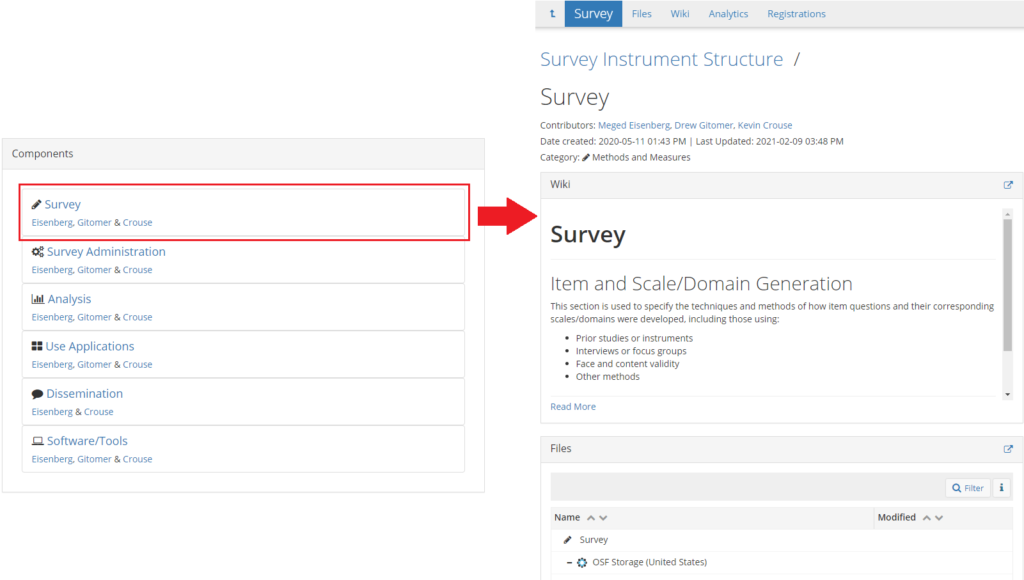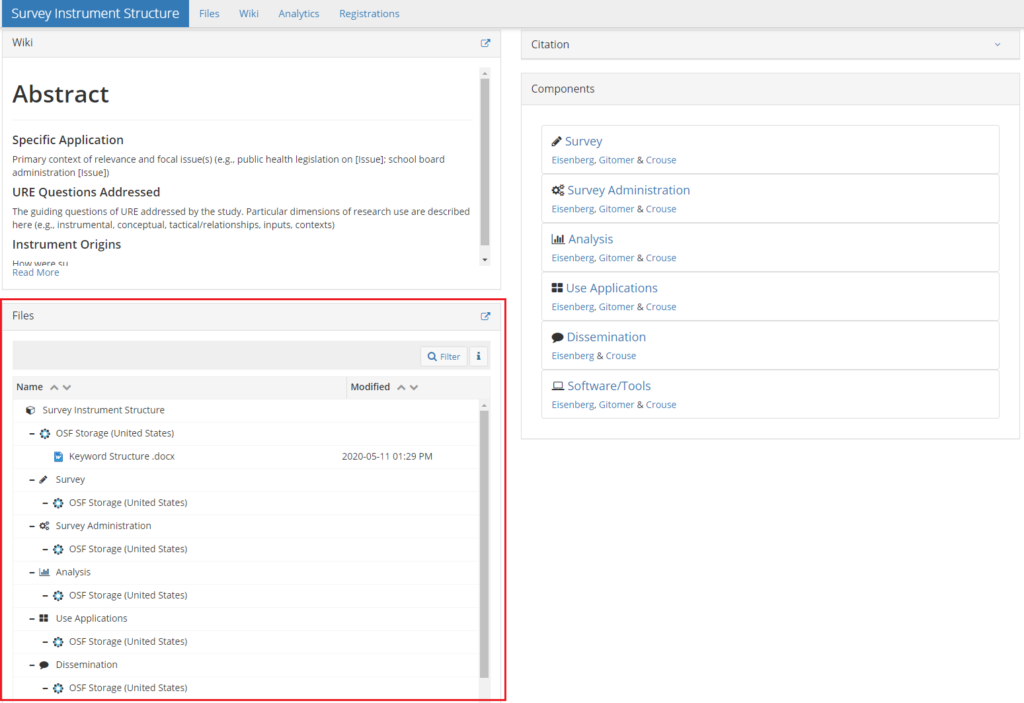Open Science Framework (OSF) Projects and the URE Repository: An Overview
The Repository is housed in the URE Methods Collection on the Open Science Framework (OSF).
The Open Science Framework is a free, open source platform that helps scientists increase research efficiency. OSF can be used to collaborate, document, archive, share, and register research projects, materials, and data.
Protocols are included in the URE Methods Repository in the form of OSF Projects. In most cases, a URE Repository protocol will consist of a single OSF Project.
In this overview, we will break down the main components that make up OSF projects, and how they are used.
OSF Projects: The Basics
OSF Projects have three primary parts: Wikis, components, and files.


The Wikis are the main source of information for a project.
Many URE Repository projects are elaborated abstracts for a method and reference external publications for additional details.
Components are subsections of a project, each with their own wiki, associated files, and possibly even their own sub-components. Projects can be linked to one another and, in that case, will also appear in the components section.


Files that the researcher would like to include with their project will appear here. This could include an instrument or guide for methods like surveys, interviews and observations. Other files might be used as ways of sharing analytic approaches, such as coding systems, or anything else associated with the method.
There are multiple ways to organize projects that are responsive to the specific designs of a study.
For example, a case study protocol based only on interviews may include just an abstract, or it may involve a more elaborated description of the interviews as part of the case development. If the case was based on multiple sources of evidence, components for each data collection method could be developed, as well as components that describe how evidence is integrated to make the case.